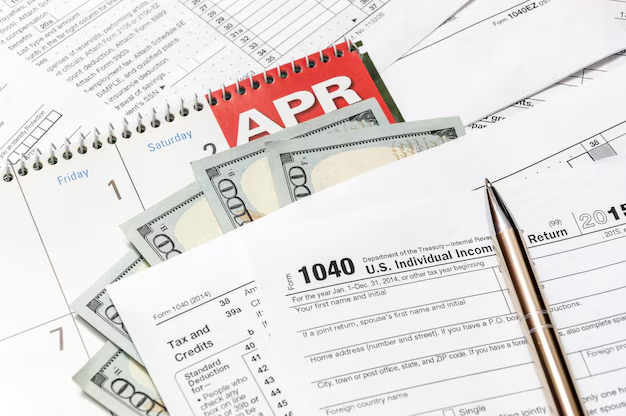Navigating State Income Tax on Qualified Dividends: What You Need to Know
Are you wondering whether you'll have to pay state income tax on your qualified dividends? Understanding the intricacies of dividend taxation can easily become a daunting task, especially when it comes to differentiating between federal and state obligations. In this comprehensive guide, we will delve deep into the taxation of qualified dividends at the state level, explore related subtopics, and provide practical insights to empower your financial decision-making.
Understanding Qualified Dividends
What Are Qualified Dividends?
Qualified dividends are a type of dividend income that is taxed at a lower rate than ordinary income. To qualify, dividends must be paid by a U.S. corporation or a qualified foreign corporation, and the stock must be held for a specific period. For many investors, the favorable tax treatment makes qualified dividends an attractive component of their investment portfolios.
Federal Taxation of Qualified Dividends
At the federal level, qualified dividends are taxed at long-term capital gains rates, which are typically lower than the rates for ordinary income. This can result in significant tax savings for investors, underscoring the importance of distinguishing qualified dividends from other forms of income.
State Income Tax on Qualified Dividends
Do States Tax Qualified Dividends?
The answer depends on the state in which you reside. Most states do impose a state income tax on dividends, including qualified dividends. However, the rate and treatment can vary significantly. Some states, like Florida, do not have a state income tax at all, while others may tax dividends at the same rate as ordinary income.
Factors Influencing State Taxation
- State-specific laws: Each state has its own tax code, which dictates how dividends are taxed.
- Residence status: Your state of residency typically determines your tax obligations. Non-residents may have different rules, especially if they earn income in multiple states.
- State income tax rate: States with higher income tax rates may impose heavier tax burdens on dividends, impacting overall investment returns.
Examples of State Tax Treatments
Here's a quick look at how some states handle qualified dividends:
- California: Taxes qualified dividends as ordinary income, subject to its highest income tax rates.
- Texas and Florida: No state income tax, so dividends aren't taxed at the state level.
- New York: Also treats qualified dividends as ordinary income, taxing them at the applicable state rate.
Beyond State Taxes: Related Considerations
Impact on Investment Strategies
Tax implications can significantly influence investment decisions. Understanding how different states tax dividends can guide portfolio allocation, investment type preferences, and more. For instance, investors in high-tax states might lean toward tax-exempt investments like municipal bonds.
The Role of Tax-Efficient Investing
To minimize tax liabilities, consider exploring tax-efficient investment strategies. These might include:
- Index funds and ETFs, which may generate fewer taxable events.
- Tax-loss harvesting to offset gains with losses and reduce taxable income.
- Roth IRAs, which allow for tax-free growth and withdrawals under qualifying conditions.
Retirement Planning and Dividend Taxes
As you plan for retirement, it's crucial to consider how dividend taxes might impact your income. Retirees often rely on dividends for a portion of their income, making it necessary to understand how state taxes can affect those earnings.
Navigating Tax Obligations: Practical Tips
Managing taxes on qualified dividends doesn't have to be overwhelming. Here are some actionable tips to help you stay on top of your obligations:
- Consult with a tax professional: Gain insights tailored to your situation, especially if you reside in different states over the year.
- Use tax software: Many tools can help track dividends and ensure compliance with state tax laws.
- Keep detailed records: Organize dividend receipts and statements for easier tax filing.
A Simple Breakdown: State Tax Considerations for Qualified Dividends
Here’s a visual summary to simplify your understanding of state taxation on qualified dividends:
| Factor | Consideration |
|---|---|
| 🏛 State-Specific Laws | Determine the tax treatment of dividends in your residence state. |
| 📊 Income Tax Rate | Evaluate how state tax rates might impact your dividend earnings. |
| 🏡 Residency Status | Identify tax liabilities based on primary residence and non-resident states. |
Key Takeaways and Next Steps
Navigating state income tax on qualified dividends requires a keen understanding of both state and federal tax laws. By staying informed and strategically managing your investment decisions, you can optimize your earnings and reduce potential tax burdens. Whether it's consulting tax professionals, leveraging tax-efficient investments, or planning for retirement, the right approach can make all the difference in your financial journey.
With these insights in hand, take the time to review your current investments and tax strategy. Make necessary adjustments to align with your financial goals while being mindful of state income tax implications. By doing so, you can make informed decisions that safeguard your financial future.
